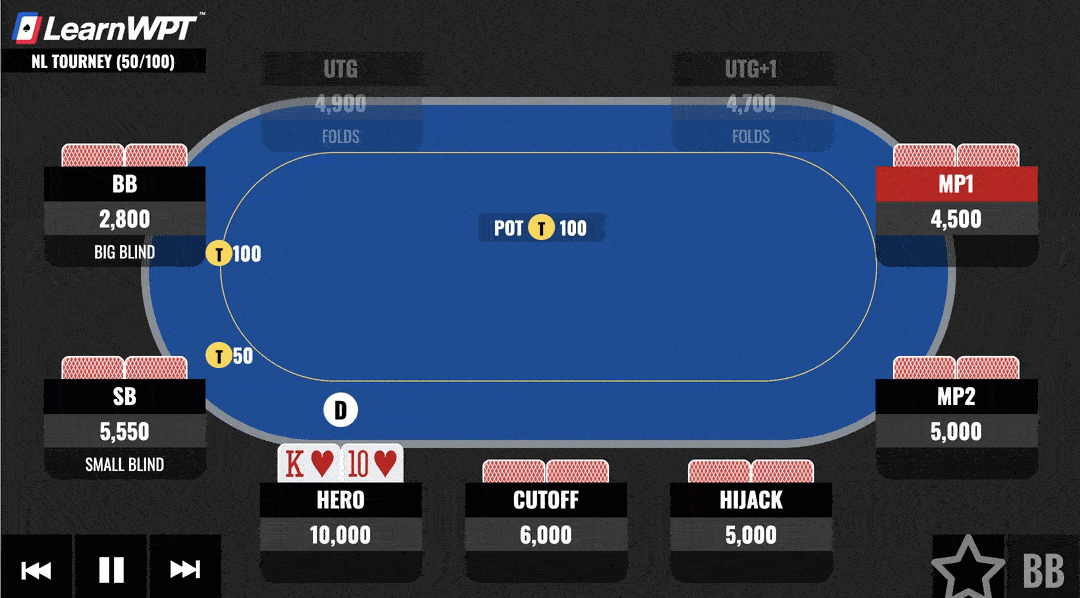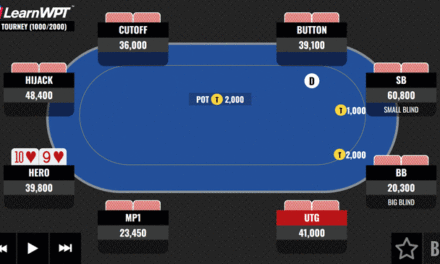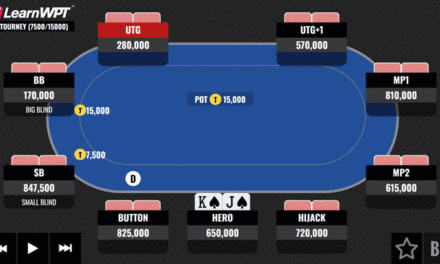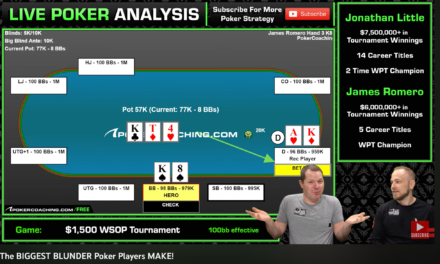
The Future, Past, and Present of Poker:
Exploitative Play for the Modern Game and Beyond
The year is 2044. IveyAI has just defeated NegreanuGPT to become the world champion of poker. Phil Hellmuth, now 80, falls short of winning his 37th bracelet. He has refused to become one of the human/AI hybrids that now dominate the game of poker, insisting that artificial intelligence could not possibly capture the magnificence that is his “white magic.”

If we take a trip in the Wayback Machine to 2004, Chris Moneymaker is the reigning champion after the “bluff heard round the world.” If you bet less than half the pot, any serious player would call you a “donkey.” If someone check-raised you, it was almost assuredly a huge hand. Solvers were still over ten years away, and it was widely believed you could tell if someone was bluffing by how they ate their Oreo cookie.
In 2024, we’re in a unique space on the poker timeline. Solvers have led to numerous discoveries that fundamentally alter how we understand poker. As computers and artificial intelligence advance, things we view as “correct” today may look archaic in the future. One thing is for certain, though: as long as humans at the table are trying to implement these advanced strategies, they will make mistakes (at least until our neural implants let us play perfectly!).
That leads us to one of poker’s current hottest debates. The clash of GTO vs. exploitative poker and which is best. A little girl, wise beyond her years, once said:

In today’s game, the best players have a base game plan that centers around GTO fundamentals, and then they adjust to their opponent’s play to maximize their win rate via exploitative play.
The knock on exploitative play is that making exploitative adjustments opens you up to exploitation. While there is fundamental truth to that, if our opponents were good enough to re-exploit our adjustments, they probably wouldn’t be making fundamental mistakes in the first place. A dynamic does exist where both bad players ripe for exploitation and good players capable of re-exploiting are at the same table.
Let’s take a classic example of isolating limpers based on exploitative strategies:
If someone is open limping at the table, they are likely capping their range, and good players will exploit this by raising the limper to isolate them in position and then attack their capped range post-flop. Since they are likely isolating with a somewhat wide range to exploit the limper, you can re-exploit by 3-betting them wider. This can still be profitable for both players (but not the limper)! The isolation raise will still show a profit in the long run, and the player 3-betting is essentially charging them a “tax” to take this action, with both players profiting in the long run at the limper’s expense.
Until we all have AI neural implants that allow us to access solvers in our brains, people will make big mistakes at the poker table. Where mistakes exist, there are opportunities to make exploitative adjustments to massively increase our win rates.
In future articles, we will explore the current poker landscape. We will start with what modern poker theory and current GTO models suggest are the best ways to play certain situations. Then, we will further examine things through real-world play. Our opponents can often be a mix of studied GTO professionals, amateurs there for fun, whales there to gamble, and people from all walks of life who enjoy the great game of poker for many different reasons.
One of the great things about this game is that even after teaching thousands of students how to play and study it, I still get questions about situations that I’ve never encountered at the table before!
So, while we will develop a framework that will teach you how to identify (and exploit) some of the more common mistakes we see at the poker tables today, more importantly, we’ll develop a framework for identifying, adapting to, and exploiting strategies on the fly for any situation we may encounter at the tables. Remember:
It’s important to love the process.
Our current understanding of the game is light years ahead of when I started playing in 2003.
Still, as computers become more powerful and AI models evolve, current strategies could evolve. It’s strange that in a game called “no limit” hold’em, many of our current models restrict betting limits, particularly preflop! I would not be surprised that as models become more advanced, we start varying our opening raise sizes (or perhaps even do some limping!) based on things other than stack depth.
While many of our tools call themselves “solvers,” the game is far from solved. It’s that constant evolution of the game that’s kept me interested for years, and with any luck, I will be battling it out with the likes of IveyAI, NegreanuGPT, and even the 80 year old white magic man himself in the future
Remember, in the world of poker, exploiting your opponents is not just okay, it’s your ace in the hole.
Until the next deal,
Eric “Rizen” Lynch
To see Rizen PXF videos, go to the PXF Training Center. Eric is an instructor at LearnWPT where he answers questions in their Ask a Pro service, runs live workshops, and hosts live seminars!
To be alerted to future editions to this series, sign up for the free PXF Newletter!








